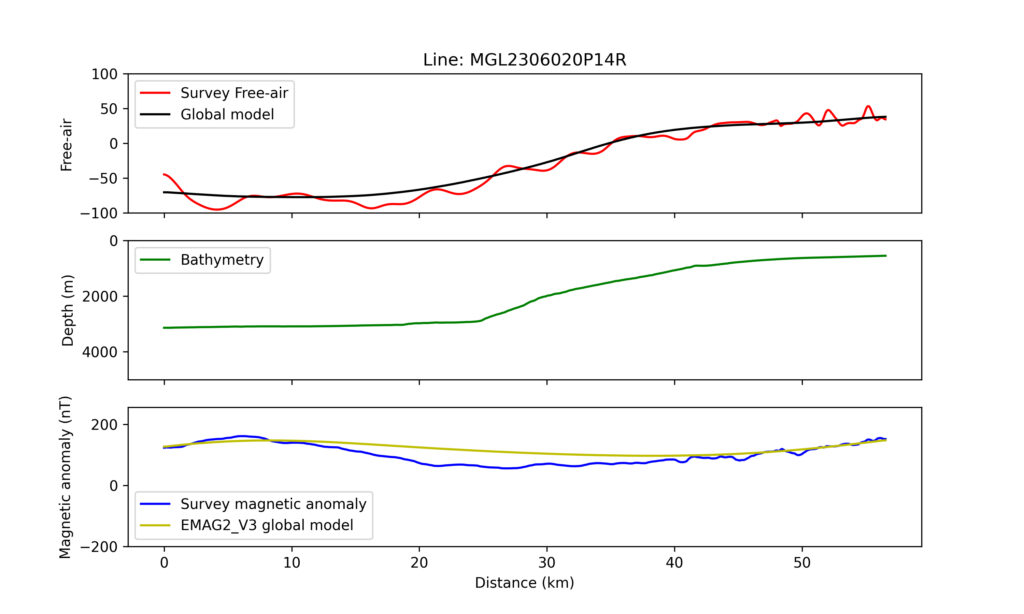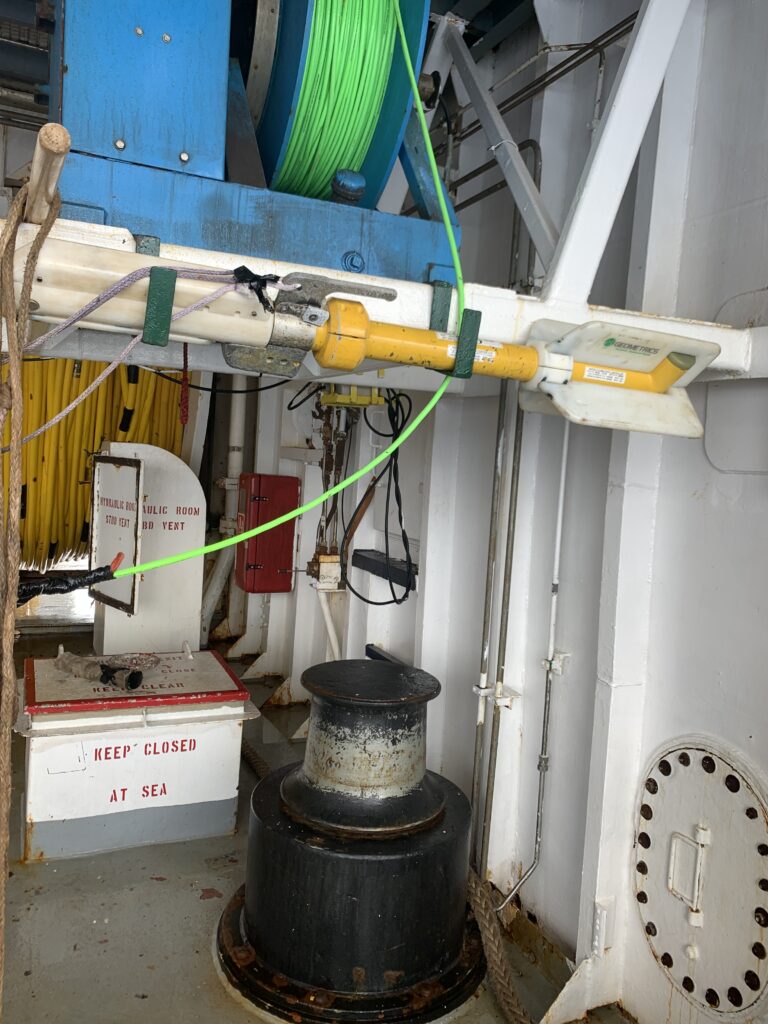Ali Mohamed, alongside Anne Bécel, has been working vigilantly to process our gravity and magnetic anomaly data. Here is a short summary of the findings provided by Ali:
As we near the end of seismic acquisition, it’s time to show you some of our work. As you all know, during this fascinating first leg (1st phase of our cruise), we not only acquired Multichannel Seismic data (MCS) but also gravity, magnetic and bathymetry data as well as a bunch of other datasets such as temperature, salinity, sound velocity, and so on. Today, let’s explore the gravity and magnetic anomalies along one of our interesting lines. Shown in the figure are the gravity anomaly, magnetic anomaly, and depth to the seafloor along one of our profiles and compared with the global anomaly models of this area.
First of all, it’s known that the global models have a coarse spatial resolution. Having a look at our survey measurements, you may see that it’s not a big deal to acquire such data as it shows a similar overall trend of the global model and nicely more short-wavelength structures that we think might be real. However, these nice, smooth curves took a lot of time and effort to process. At a glance, due to the high spatio-temporal resolution of our instruments, the workflow to produce these nice curves include detecting and replacing missing data, detecting and replacing outliers, and applying Median and Gaussian filtering, when needed.
So, what do get from these plots? First, as you see on the gravity plot, there is a significant variation in the gravity acceleration between the measured and global model predictions. This also goes from negative to positive anomalies which implies a difference between bathymetry and lithology. As you see on the bathymetry plot, we are moving landward from deep water to the continental shelf. The magnetic data also shows high values when it crossed the famous East Coast Magnetic Anomaly (ECMA), a positive magnetic anomaly that parallels the coast. It’s not the case for this data only. Our target is to get as much processed data as we can, if not the full data, by the end of the cruise. That’s why our team works 24/7 in divided shifts and specified duties.



The first machine is our gravitometer and is used to gather our gravity data. The magnetometer (the second picture) is towed behind the boat to gather our magnetic anomaly data.